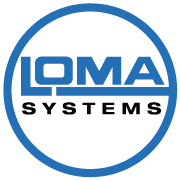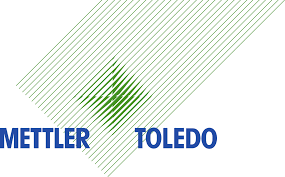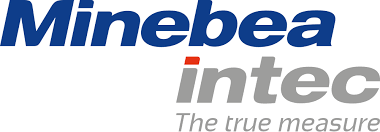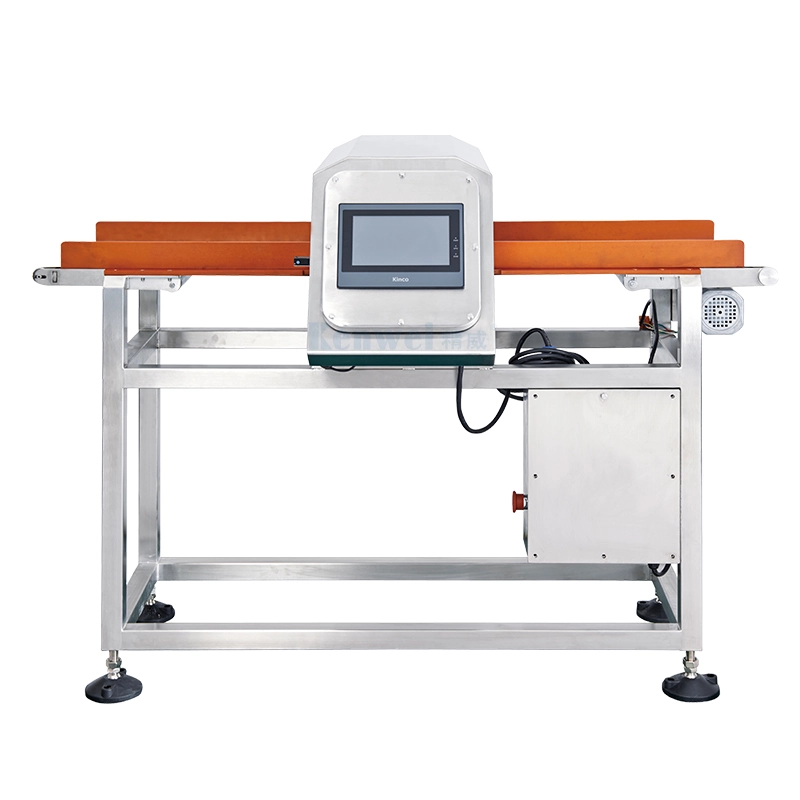How to Choose the Best Metal Detector for Food Industry 2026
- 2026 Market Trends & Insights for Metal Detectors in the Food Industry
- What Is a Metal Detector for Food Industry?
- Why Metal Detection Fails?
- Other factors that reduce performance include:
- Types of Metal Detectors for the Food Industry
- Video Demo – Metal Detector for Aluminum Foil Packaging Lines
- How to Choose the Best Metal Detector for Food Industry
- Step 1: Product characteristics
- Step 2: Sensitivity requirements
- Step 3: Location in the production line
- Step 4: Production speed and throughput
- Step 5: Reject mechanism selection
- Step 6: Certification needs
- Best 5 Metal Detector for Food Industry
- 1. Kenwei (China)
- 2. Sesotec (Germany)
- 3. Loma Systems (UK)
- 4. Mettler‑Toledo(Switzerland / UK)
- 5. Minebea Intec (Germany / Japan)
- Buying Checklist for Food Manufacturers
- Kenwei Metal Detector Solutions
- FAQs about Metal Detector for Food Industry
- 1. What is the best metal detector for food industry?
- 2. Metal detector vs X-ray: which should I choose?
- 3. Does product temperature affect detection?
- 4. What metals are hardest to detect in food?
- 5. How do I prevent false rejects?
- 6. Can aluminum be detected by metal detectors?
- 7. Where should a metal detector be installed in a food line?
- 8. Do I need a reject system for my metal detector?
- Conclusion
Discover the best metal detector for food industry to ensure safety, accuracy, and compliance in food processing lines.
2026 Market Trends & Insights for Metal Detectors in the Food Industry
The global metal detector for food industry market is expected to grow significantly, driven by stricter food safety regulations, increasing automation in food processing lines, and rising demand for highly sensitive metal detectors for food processing systems. Looking specifically at metal detectors for food industry in 2026, market research shows the segment will continue expanding, with a projected CAGR of approximately 5.2% from 2026 to 2033, fueled by the need for faster detection, improved traceability, and compliance with international food safety standards.
What Is a Metal Detector for Food Industry?
A metal detector for the food industry is designed to identify ferrous, non-ferrous, and stainless-steel contaminants in food products. This modern metal detector detects disruptions caused by metal in food systems using electromagnetic fields. It's important to understand how metal detectors work in the food industry because it directly impacts your choice of machine for your production line.
These detectors are fantastic because they are so versatile and can be used on a wide range of products, including meat, poultry, bakery items, seafood, snacks, nuts, beverages, and seasoning items. It's harder to detect stuff when there's a lot of moisture, salt, acidity, or conductivity, which is why it's important to use a high-performance metal detector in the food industry. This helps reduce false rejects, keep sensitivity consistent, and improve food safety overall.
Why Metal Detection Fails?
Even the best metal detector for the food industry can have problems like false rejects and unstable results if the system isn't designed or configured properly. A variety of issues can arise when the metal detector you select for food does not match the product's characteristics or the manufacturing environment. One big challenge is the "product effect," where the food itself generates signals similar to metal. Moist, salty, acidic, or hot products can create strong product effects, causing a standard metal detector for food processing to trigger false alarms. That's why it's crucial to invest in a top-notch metal detector for the food industry with multi-frequency technology. This ensures consistent sensitivity and reliable detection.
Other factors that reduce performance include:
Incorrect aperture size: An aperture too large or too small for the product can reduce sensitivity and increase false rejects.
Fast line speeds without compensation: High-speed production without proper detection adjustments may cause missed contaminants.
Poor coil design: Suboptimal coil placement or structure can limit detection accuracy, especially for small or low-conductivity metals.
Inadequate reject systems: Slow or unreliable rejection mechanisms can allow contaminated products to pass through or trigger unnecessary stoppages.
Incorrect auto-learning configuration: Misconfigured auto-learn settings prevent the detector from adapting to product variations, increasing false alarms.
When manufacturers search for a food metal detector for sale, they must ensure the system supports high-frequency and low-frequency modes, intelligent auto-learn, and a stable coil architecture. Failing to evaluate these factors prevents even the best-rated metal detectors from performing optimally.
Types of Metal Detectors for the Food Industry
Depending on the type of packaging, how things flow, and what category the product is in, food manufacturers use different types of metal detectors in the food industry. Picking the right metal detector for the food type makes sure you get the best detection sensitivity and a smoother integration.
| Type | Detection Sensitivity | Product Effect Adaptability | Speed / Throughput | Hygiene & Cleaning | Special Features | Typical Applications |
|---|---|---|---|---|---|---|
| Conveyor Metal Detector | Fe: 1.0–1.5 mm, Non-Fe: 2.0 mm, SS: 2.5 mm | Medium–High, depends on multi-frequency | Up to 120 m/min | IP66/IP69K, easy CIP cleaning | Multi-frequency, auto-learn, reject integration | Bakery, snacks, meat, poultry, frozen foods |
| Gravity-Fed / Drop-Through | Fe: 0.8–1.2 mm, Non-Fe: 1.5–2.0 mm, SS: 2.0–2.5 mm | Medium, suitable for free-flowing powders | 0.5–3 t/h | Compact, hygienic stainless steel | Multi-frequency, auto-calibration | Sugar, spices, flour, rice, nuts |
| Pipeline / Liquid Detector | Fe: 1.0–1.2 mm, Non-Fe: 1.5–2.0 mm, SS: 2.0–2.5 mm | High, can handle liquids with product effect | 500–3000 L/h | CIP-compatible, stainless steel | Multi-frequency, data logging, conductivity compensation | Juices, sauces, soups, dairy |
| Handheld / Wand Detector | Fe: 1.0–2.0 mm, Non-Fe: 1.5–2.5 mm, SS: 2.0–3.0 mm | Low–Medium, spot checks only | Manual scan | Lightweight, waterproof | Portable, adjustable sensitivity | Raw materials, ingredients, small batch inspection |
| Multi-Head Combo Systems | Fe: 1.0 mm, Non-Fe: 1.5 mm, SS: 2.0 mm | High, can compensate for product effect | Up to 100 packs/min | Integrated hygienic design | Metal detection + weighing + auto-reject, multi-frequency, smart auto-learn | Snack packs, frozen meals, pre-packaged foods, confectionery |
Video Demo – Metal Detector for Aluminum Foil Packaging Lines
How to Choose the Best Metal Detector for Food Industry
When QA engineers and production managers pick a metal detector for the food industry, they trust a good food metal detector manufacturer. A good food metal detector manufacturer makes sure the system balances sensitivity, handles product effects, and guides the selection process for product type, speed, reject mechanisms, and certifications.
Step 1: Product characteristics
Foods that are wet, salty, acidic, or high in moisture need an advanced multi-frequency metal detector for food processing systems.
Step 2: Sensitivity requirements
It's crucial to know which metals to detect. A lot of buyers ask, "Can I find aluminum with a metal detector?"—and the answer is yes, as long as you've got a good coil and you're set to the right frequency.
Step 3: Location in the production line
You can use it before, after, or as part of a complete packaging system.
Step 4: Production speed and throughput
High-speed lines need the best metal detectors out there, the ones with fast reject mechanisms.
Step 5: Reject mechanism selection
Pushers, air blasts, drop flaps, and retracting conveyors have to match the product's shape and weight.
Step 6: Certification needs
HACCP, IFS, BRC, and retailer audits require a digital log system and traceability.
Choosing correctly ensures your plant gets the best metal detector for food industry that suits both operation and compliance requirements.
Best 5 Metal Detector for Food Industry
1. Kenwei (China)
-
Product Features: High‑precision metal detector for food industry using multi-frequency technology, stainless‑steel search heads, and customizable aperture sizes. Their metal detector for food processing systems integrates seamlessly with Kenwei’s multi-head weighers and checkweighers.
Advantages: Strong value/cost performance, full one-stop automated weighing + detection + packaging solution, rapid technical support, and high-speed rejection. Because Kenwei is both a weigher and detector manufacturer, clients benefit from tight integration.
Disadvantages: Slightly less brand recognition outside Asia compared to some long-established Western manufacturers; certain ultra-high sensitivity or audit-heavy sites may need tailored models.
Customer Feedback: Many food processors praise Kenwei’s food metal detector for sale solutions for reliability and ease of maintenance, noting that their after-sales support is very responsive and that the integrated systems reduce installation complexity.
-

2. Sesotec (Germany)
-
Product Features: The C‑SCAN GHF conveyor metal detector for food industry supports HML multi-frequency technology, IP‑rated housing (up to IP 69K), and advanced signal logic optimized for stainless steel. Its integrated logbook supports HACCP, IFS, and BRC compliance.
Advantages: Exceptional precision, high immunity to vibration and temperature fluctuations, hygienic design, and strong audit traceability. The multi-frequency option helps deal with challenging product effects.
Disadvantages: Higher upfront cost and complexity; tuning multi-frequency detectors requires experienced engineers; long lead time for custom tunnel sizes.
Customer Feedback: Some food companies (e.g., in bakery, meat, fruit) commend Sesotec detectors for very low false-negative rates and high stability, especially for stainless-steel detection.
-

3. Loma Systems (UK)
-
Product Features: The IQ4 Run‑Wet conveyor food metal detector, rated IP69, uses variable frequency (31–882 kHz) and a 7” color touchscreen. Their IQ4M model features multi‑spectrum detection plus variable frequency, with advanced connectivity (e.g., OPC‑UA, RFID).
Advantages: Highly flexible for many food applications, excellent hygiene design, very clean operations after washdowns, fast auto-learn, and strong data logging for audits.
Disadvantages: More expensive when used with checkweigher combos, and for very high-conductivity products may take some time to tune.
Customer Feedback: Loma’s IQ4 series is widely praised for its intuitive UI, rugged design, and variable frequency performance; many QA engineers highlight that setup is fast and detection sensitivity is very reliable.
-

4. Mettler‑Toledo(Switzerland / UK)
Product Features: The Profile Advantage metal detector is designed for demanding food environments (wet, hot, chilled, metal‑film packs) and employs multi-simultaneous frequency plus product-signal suppression for enhanced sensitivity.
Advantages: Global reputation, very mature technology, modular and upgradeable design, reliable rejection, and comprehensive service network.
Disadvantages: High cost of ownership, and some users report sensitivity issues in very wet/high-moisture lines. As one Reddit maintenance worker said, Safeline detectors in a food plant sometimes trigger on tiny moisture variations.
Customer Feedback: Many food plants rely on Mettler-Toledo metal detectors for validation and audit-heavy production. However, some smaller or low-budget lines report challenges with moisture-related false rejects and phase tuning.

5. Minebea Intec (Germany / Japan)
-
Product Features: The Mitus® metal detector uses MiWave technology (flexible modulation) to detect ferrous, non-ferrous, stainless steel, and even light metals like aluminum, while minimizing false rejects due to product effect.
Advantages: Extreme sensitivity, particularly in difficult products with large product effects; modular designs; proven technology; strong traceability. MiWave modulation gives the best metal detector for food industry when the product effect is large.
Disadvantages: Relatively expensive; requires technical knowledge for tuning; may need integration with existing lines.
Customer Feedback: Pacific Nut Company in Chile praised Minebea Intec's Vistus system for its consistent sensitivity, low false rejections, and ease of cleaning.
-

Buying Checklist for Food Manufacturers
A practical checklist makes sure you pick the best metal detector for the food industry and avoid spending more than you should. If you're buying your first metal detector for a food business or upgrading to a newer one for a food processing unit, check for:
-
Buying Factor Description Benefit / Reason Proper Aperture Size Choose an aperture that fits your product dimensions for a food metal detector for sale Maximizes sensitivity and reduces false rejects in your metal detector for food industry line Hygienic Design (IP66/IP69K) Fully washable and dust/water resistant construction Ensures compliance with food safety standards and facilitates easy cleaning of your metal detector for food Stainless Steel Construction Durable stainless steel housing and components Corrosion-resistant for wet or acidic products, suitable for any metal detector for food processing environment Stable Multi-Frequency Architecture Supports high and low-frequency modes Detects difficult metals and minimizes product effect, improving performance of best metal detector for food industry systems Auto-Learn Function Intelligent auto-calibration and signal learning Reduces setup time and enhances consistent detection accuracy in your metal detector for food industry Rejector Mechanism Compatibility Integrates with air blast, pusher, or drop reject systems Ensures contaminated products are reliably removed from the line for food metal detector for sale solutions Real-Time Data Logging Records detection events and operational data Supports traceability, audits, and compliance in your metal detector for food processing operations Recall Audit Support Provides audit-ready reports and logs Helps meet HACCP, BRC, IFS, and other regulations for best rated metal detectors Spare Parts & Service Availability Access to local or manufacturer-supported parts and maintenance Minimizes downtime and ensures long-term reliability of your metal detector for food Integration Flexibility Connects with weighers, packaging lines, or production software Enables a seamless one-stop solution, combining weighing, detection, and packaging with your metal detector for food industry
These buying factors help ensure you invest in a food metal detector for sale that delivers long-term reliability and meets food safety standards.
Kenwei Metal Detector Solutions
Kenwei designs high-speed, high-precision metal detectors for the food industry, offering stability, accuracy, and easy integration. Our stainless steel systems are top-notch at detecting ferrous, non-ferrous, and stainless contaminants, making each metal detector perfect for today's food production lines.With advanced auto-learn technology, smart control systems, and optional combination units, Kenwei makes sure every metal detector for food processing stays sensitive, even when dealing with product effects. We also offer metal detector wands for the food industry, for manual inspection and quality verification in special applications.Kenwei's forte is engineering, customization, and full-line integration, so customers can easily find a food metal detector that fits their layout, budget, and compliance needs.
FAQs about Metal Detector for Food Industry
1. What is the best metal detector for food industry?
The best metal detector for your needs depends on your product, the materials it's made of, and how fast you need to produce it. For dry products, a standard high-frequency metal detector for food is enough. For wet or conductive products, a multi-frequency metal detector for food processing is more reliable. If you've got high-speed packaging lines, you might need a combination system with checkweighing. When you're making a strong buying decision, you've got to think about things like sensitivity, reject type, hygiene design, and the total cost of ownership.
2. Metal detector vs X-ray: which should I choose?
Metal detectors are great for finding ferrous, non-ferrous, and stainless steel, while X-ray systems are good for detecting dense contaminants like glass or stones. A metal detector for the food industry is cheaper, easier to maintain, and more sensitive to small metal particles. X-ray is better for thick, dense, or overlapping foods, but it costs more. Most manufacturers mix both technologies, depending on the risk analysis and audit requirements.
3. Does product temperature affect detection?
Yeah, the temperature of the product can make a difference in how well it works with a metal detector for food. Hot, warm, or frozen products can all have a different effect, and that can affect how sensitive the detector is. Warmer products may produce higher conductivity, causing false rejects. Frozen foods often become more stable. Today's multi-frequency metal detectors for food processing units can automatically adjust using auto-learn to compensate for temperature-related effects.
4. What metals are hardest to detect in food?
Stainless steel, especially 304 and 316 grades, is harder to detect because of its low magnetic permeability. If you're looking to keep your food industry metal detector accurate, you'll need a high-quality one. Proper reject tuning, balanced coil design, and appropriate aperture size all help to identify even difficult-to-detect metals. Many people wonder whether metal detectors can detect stainless steel. — The answer is yes, if the system is properly designed.
5. How do I prevent false rejects?
False rejects can be caused by product effects, vibrations, electrical noise, and unstable frequency tuning. Using a multi-frequency metal detector for food, optimizing conveyor speed, and using auto-learn reduce false signals. Making sure you've got a steady power supply and the right shielding in place can also help keep things reliable. The right metal detector for food processing makes sure that every reject is accurate and traceable.
6. Can aluminum be detected by metal detectors?
Yes. Many people are curious whether aluminum can be detected using a metal detector, and the answer is yes. Modern metal detectors used in the food industry can easily detect aluminum if the frequency and aperture are set correctly. But thin aluminum foil needs special modes or X-ray inspection.
7. Where should a metal detector be installed in a food line?
Ideally, you'd install a metal detector for food as late in the production line as possible to reduce the risk of contamination. Many manufacturers use a metal detector before and after packaging to ensure that everything is protected. The best location is determined by the packaging and the product's movement throughout the space.
8. Do I need a reject system for my metal detector?
Yes. A metal detector for the food industry needs a reliable way to reject contaminated products automatically. This ensures that all detection events are handled safely and consistently. Even the best metal detector for the food industry isn't going to be able to guarantee compliance or audit readiness if it doesn't have a proper reject system.
Conclusion
Picking the right metal detector for the food industry is key to keeping food safe, reducing recalls, and meeting global certifications. If manufacturers use the right metal detector for food systems, they can protect their consumers and their brand. If you're looking for a high-quality metal detector for food processing or a food metal detector that's for sale, Kenwei has you covered. We're talking precision, stability, and total customization that's a perfect fit for your production line.




About Product choice
What is the average lifespan of Kenwei products?
Kenwei machines are built for durability and longevity. With proper maintenance, our products are designed to last for many years, even under heavy usage. We offer maintenance services and support to help extend the lifespan of your machines.
About Solution suggestions
Can Kenwei machines handle products with irregular shapes or sizes?
Yes, multi-head weighers are particularly effective for handling products with irregular shapes and sizes.
About Price and payment
How do I make a payment for Kenwei machines?
We accept several payment methods: T/T, Letter of Credit (L/C)
Are the prices for Kenwei machines negotiable?
Prices are generally fixed, but depending on the order volume, long-term partnerships, or special circumstances, we may offer discounts or promotional pricing. Please contact our sales team to discuss your specific situation.
About Cooperation Process
How does Kenwei ensure the quality of its machines?
Kenwei has a stringent quality control system in place. Each machine is rigorously tested for precision, speed, and reliability before it is shipped.

Enhance food safety with Kenwei’s Dropped Metal Detector for Powder Granules. This advanced food metal detector ensures precise detection in the food industry, safeguarding products and maintaining high quality standards throughout processing.

This type of weigher is designed to handle the unique characteristics of pickles, ensuring precise measurements for packaging and distribution. It uses a vertical single screw mechanism to feed the pickles into the weighing system, allowing for efficient and consistent weighing. This technology is particularly useful in food processing and packaging facilities where precise portioning is essential for quality control and customer satisfaction. This specialized equipment is perfect for accurately measuring and dispensing pickles in a production line or packaging facility. The vertical design allows for efficient and precise filling of containers, while the single screw feeding mechanism ensures consistent and reliable weighing.

The standard no-spring combination scale features a patented spring-free hopper design, making it ideal for weighing a variety of products such as melon seeds, peanuts, nuts, almonds, grapes, candies, pistachios, potato chips, shrimp chips, and more. The double-support feeding tray is easily adjustable, while the feeding hopper is designed for easy disassembly, ensuring convenience and cleanliness. With a maximum weighing speed of up to 120 bags per minute, the 14-head standard no-spring combination scale is an economical, versatile, and cost-effective solution.

Contact Kenwei
Our company is located in areas with convenient transportation and developed economy. Our products are supplied in a timely manner. In the course of business operation, we always focus on customers.Have any questions or concerns about our products? Please leave us a message here, and our team will get back to you promptly.









Kenwei
Kenwei
Kenwei multi weigh
Kenwei
Kenwei
Kenwei